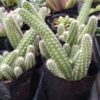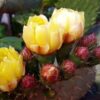Special Festivals in Chinese Culture to Bring Good Luck and Fortune

Chinese culture is rich with traditions, rituals, and celebrations that have been passed down through generations. These customs are deeply rooted in the principles of balance, harmony, and respect for the forces of nature. Among the many aspects of Chinese culture, the festivals and holidays hold particular significance, as they are seen as times to invoke blessings, celebrate new beginnings, and bring good fortune into one’s life. In this article, we will explore some of the most important festivals in Chinese culture that are believed to bring good luck and prosperity, the rituals associated with them, and how these practices continue to shape modern celebrations.
1. Chinese New Year (Spring Festival)
Chinese New Year, also known as the Spring Festival (春节, Chūnjié), is the most important and widely celebrated festival in Chinese culture. It marks the beginning of the lunar new year and is filled with a variety of customs designed to bring good fortune, drive away evil spirits, and ensure prosperity for the coming year.
The festival typically lasts for 15 days, beginning with the first day of the lunar new year and ending with the Lantern Festival. During this period, families engage in numerous activities meant to promote good luck, including cleaning the house to sweep away bad luck, offering sacrifices to ancestors, and participating in dragon and lion dances to drive away negative energies.
Key Customs and Beliefs for Good Luck:
- Reunion Dinner: The Chinese New Year kicks off with a grand family dinner, where the meal often features symbolic foods. Fish is commonly served, as the Chinese word for fish (鱼, yú) sounds like “surplus,” symbolizing abundance and good fortune. Dumplings shaped like gold ingots are also popular, representing wealth and prosperity.
- Red Envelopes (Hong Bao): One of the most iconic traditions during Chinese New Year is the giving of red envelopes, known as hong bao (红包). These envelopes contain money and are given to children, unmarried adults, and sometimes employees. The color red is associated with good luck and joy, while the money inside symbolizes blessings for wealth and prosperity.
- Fireworks: Fireworks are a vital part of the celebration, symbolizing the banishment of evil spirits and the welcoming of a new year filled with good luck and happiness. The loud noise and bright displays are thought to scare away evil influences and attract positive energy.
- Cleaning and Decorating the Home: Leading up to Chinese New Year, families clean their homes thoroughly to remove bad luck and create space for new, positive energy. Decorations, often in red and gold, are hung around the house to invite good fortune. Images of auspicious animals like the dragon, phoenix, and tiger are commonly featured in the decor.
2. Lantern Festival
The Lantern Festival (元宵节, Yuánxiāo Jié), which takes place on the 15th day of the lunar new year, marks the end of Chinese New Year celebrations. This festival is primarily associated with the appreciation of light, the illumination of homes with lanterns, and the enjoyment of sweet rice dumplings (tangyuan, 汤圆), which are round and symbolize unity, completeness, and the wish for family harmony.
Customs and Rituals:
- Lantern Display and Lantern Riddles: People decorate their homes and public spaces with colorful lanterns. Lanterns are often shaped like animals, flowers, or even mythical creatures. One fun tradition is the solving of lantern riddles, where riddles are written on the lanterns, and those who solve them are rewarded with small prizes.
- Eating Tangyuan: The round rice dumplings filled with sweet fillings, typically black sesame or red bean paste, are a key part of the festival. The round shape of tangyuan represents unity and completeness, and eating them is thought to bring harmony to family life and relationships.
- Dragon and Lion Dances: Similar to Chinese New Year, the Lantern Festival often features dragon and lion dances. These performances are believed to bring good fortune and are meant to scare away evil spirits, ushering in happiness and prosperity.
3. Qingming Festival (Tomb Sweeping Day)
Qingming Festival (清明节, Qīngmíng Jié) occurs on April 4th or 5th each year and is a time for Chinese people to honor their ancestors and visit their gravesites. While the primary focus of the holiday is paying respects to the deceased, it also serves as a time for renewal and bringing good fortune.
Customs and Beliefs:
- Tomb Sweeping: Families visit the graves of their ancestors, clean the tombstones, and make offerings of food, incense, and paper money. This act of honoring ancestors is believed to bring blessings to the living and to ensure the spirits of the deceased continue to watch over and protect their descendants.
- Flying Kites: One of the lighter traditions of the Qingming Festival involves flying kites, which is believed to bring good luck and drive away evil spirits. Some people attach small bells or notes to the kites, and once they are flown high, they cut the string to symbolically release bad luck.
- Eating Sacrificial Foods: The foods offered to ancestors are often special and symbolic, such as cakes made from the spring harvest, or foods that are believed to please the spirits and promote harmony.
4. Mid-Autumn Festival
The Mid-Autumn Festival (中秋节, Zhōngqiū Jié), held on the 15th day of the 8th lunar month, celebrates the harvest moon and family reunion. This festival is deeply associated with the lunar calendar, and it is a time for families to come together, admire the full moon, and enjoy mooncakes.
Key Traditions and Symbolism:
- Mooncakes: Mooncakes, round pastries filled with sweet or savory fillings like red bean paste or lotus seed paste, are traditionally given as gifts during the Mid-Autumn Festival. The round shape of the mooncake symbolizes family unity and completeness. Sharing mooncakes with family and friends is believed to bring good fortune and strengthen relationships.
- Admiring the Moon: The full moon is seen as a symbol of completeness, peace, and prosperity. Families gather to appreciate the moon’s beauty and reflect on the importance of family unity. The moon’s light is thought to have the power to bring harmony and good luck to the family.
- Lanterns: Lanterns are also part of the Mid-Autumn Festival, and children often carry them in the evening to symbolize the hope for a bright and prosperous future. The colorful lanterns are a reminder of the moon’s light and are thought to attract positive energy.
5. Double Ninth Festival (Chongyang Festival)
The Double Ninth Festival (重阳节, Chóngyáng Jié) takes place on the 9th day of the 9th lunar month and is celebrated to honor the elderly, prevent illness, and ensure longevity. The number nine is considered auspicious in Chinese culture, symbolizing longevity and good health.
Customs and Beliefs:
- Climbing Mountains: One of the key traditions during the Double Ninth Festival is mountain climbing. It is believed that by climbing a mountain on this day, you can ward off evil spirits and avoid misfortune. Climbing symbolizes strength and vitality, ensuring that the year ahead will be filled with health and prosperity.
- Chrysanthemums and Wine: Chrysanthemums are considered symbols of longevity in Chinese culture, and they are often used in offerings during the festival. People drink chrysanthemum wine to celebrate and ask for good health in the coming year.
- Honoring the Elderly: The festival is a time to show respect and appreciation for the elderly. Families gather to pay tribute to older members, and gifts are often given to promote their well-being and prosperity.
6. The Dragon Boat Festival
The Dragon Boat Festival (端午节, Duānwǔ Jié) occurs on the 5th day of the 5th lunar month and is celebrated with dragon boat races, eating zongzi (sticky rice wrapped in bamboo leaves), and honoring the ancient poet Qu Yuan. This festival has elements of warding off evil spirits, promoting health, and ensuring good luck.
Customs and Beliefs:
- Dragon Boat Races: Dragon boat races are held to commemorate Qu Yuan and to symbolically fight against evil forces. The boats, shaped like dragons, are meant to bring strength, courage, and good fortune to those who participate.
- Eating Zongzi: Zongzi, sticky rice wrapped in bamboo leaves and often filled with meats or sweet fillings, is a traditional food during the Dragon Boat Festival. It is believed to bring good health and protection against evil spirits.
- Hanging Herbs and Amulets: People hang herbs like calamus and mugwort on their doors during the festival to protect their homes from evil spirits and disease.
Conclusion: Festivals as Vehicles for Good Luck in Chinese Culture
Chinese festivals are not only times for family gatherings and celebration but also moments to connect with the deeper spiritual traditions of the culture. Through rituals, offerings, and symbolic foods, these festivals are believed to bring blessings, good fortune, and prosperity. Whether it’s through the burning of incense, the sharing of mooncakes, or the giving of red envelopes, each custom serves to invite good energy into the lives of the participants. By honoring these traditions, individuals foster a deep connection to the past, while also paving the way for a prosperous future.

